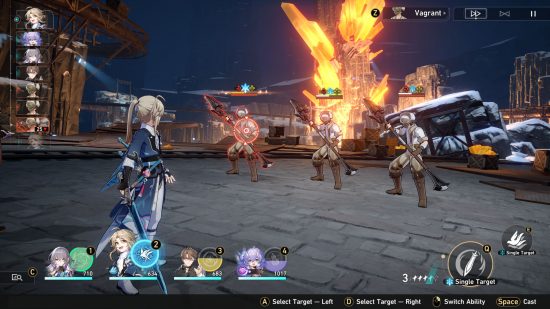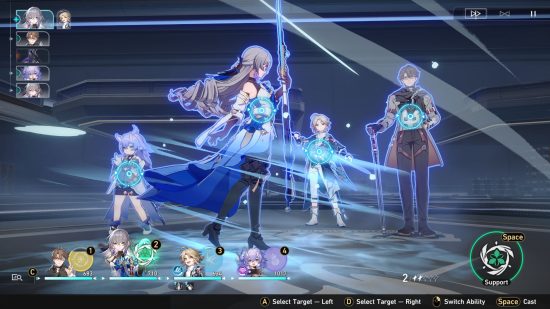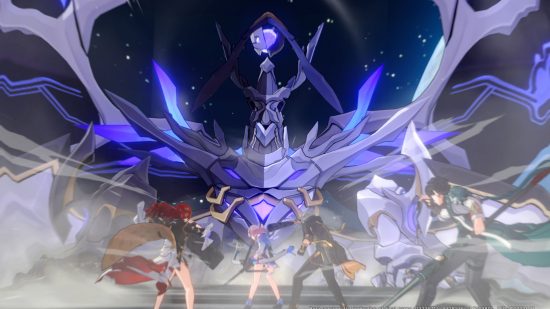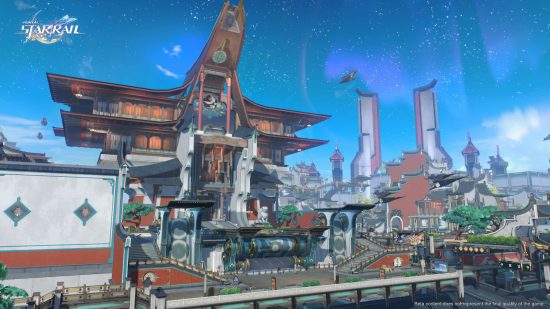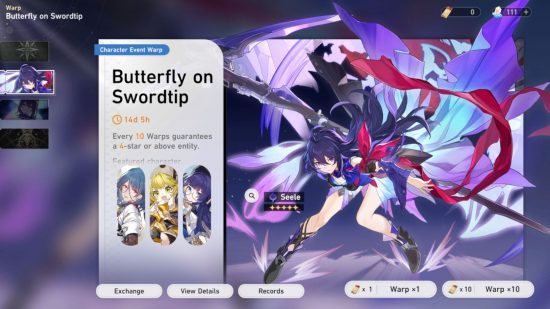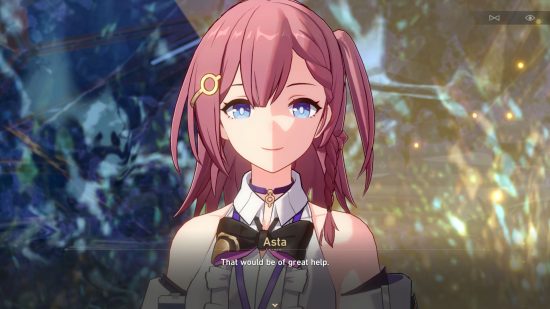Honkai Star Rail review – help, there’s a Stellaron in my tummy
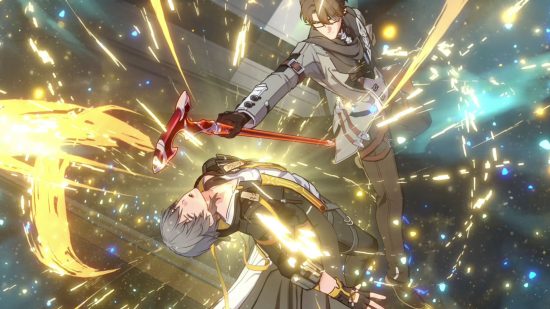
It’s no secret that I’m a huge fan of Hoyoverse’s games – I even named my beloved cat after Genshin Impact’s Xiao. Needless to say, I’ve eagerly clutched my ticket to the Astral Express ever since I first heard news of this turn-based, interstellar adventure. And now, after taking part in a whopping three beta tests, I’m finally ready to gush about it in this Honkai Star Rail review.
I admit, from what I’d seen in preview videos and promotional material, I originally thought Honkai Star Rail was pretty much going to be a Genshin clone with turn-based combat and a space-themed reskin. But boy was I wrong. Honkai Star Rail isn’t a mere Genshin clone, it’s so much more than that.
The plot of Honkai Star Rail is gripping from the get-go, launching you into a space station in the midst of a chaotic attack. After initially testing the waters as the badass Kafka and Silver Wolf, you naturally take the role of an amnesiac newcomer with little to no knowledge of the world around you. While it may be somewhat of a cliche by now, the fish-out-of-water trope works well here, allowing you to learn about the world alongside the character.
During the massive attack on Herta Space station, you manage to accidentally Kirby-mouthful-mode a Stelleron, also known as ‘the cancer of worlds’ – yikes. This pushes you to hop aboard the Astral Express to avoid becoming a test subject for Herta, the super genius leader of the space station. Alongside the sunny, optimistic March 7th and her stoic, sensible companion, Dan Heng, you set off Trailblazing. So, it’s time to go exploring new worlds, fighting fragmentum monsters, and trying to work out how to get that pesky Stellaron out of your tummy.
The storytelling is honestly stellar, featuring a wonderfully weird sci-fi tale wrapped up with grounded political conflicts and realistic issues. Even the random side quests you pick up pull you into engaging, world-building stories – I especially find those relating to Natasha and Hook to be so moving, it’s tough not to shed a tear or two. Across the three betas, I’ve explored the Herta Space Station, Jarilo-VI, and Xianzhou: The Luofu, completing every story mission and side quest I could get my paws on, and I’m painfully eager to see more.
The dialogue is delightful and certainly doesn’t take itself too seriously most of the time, while also treating darker subjects with tact and care. Your speech options as a main character are more varied than that of the Genshin Impact Traveler, and the people you’re talking to react accordingly depending on what you choose to say. Even NPCs and objects have interesting backstories (just take a look at our piece on the Honkai Star Rail trash cans if you don’t believe me).
Of course, all of this is supported by a truly wonderful cast of characters. I can never fault Hoyoverse’s gorgeous character design, and it really shines here, in both aesthetics and personality. Whether you’re exploring new areas with the chronically upbeat March 7th, fetching packages for the kind-hearted Natasha, chasing down the mischievous Sampo or Hook, or asking Welt a wealth of questions – they’re all so loveable, and truly make for an enchanting experience, only enhanced by the endearing text message conversations you share with them every day.
Both the Honkai Star Rail mobile and PC controls are great, both in and out of combat. Buttons are large, positioned well, and easy to see. The UI is impressively minimalistic considering how much is going on, and both movement and camera controls are intuitive. However, on mobile, I often find when collecting rewards, the list of goodies overlaps with the on-screen joystick, meaning I can’t move until it fades out.
At first, I wasn’t sure I’d enjoy the turn-based combat – I usually prefer fast-paced, action-style battles. However, I’m pleasantly surprised by how engaging and challenging it is. Hoyoverse hasn’t developed a turn-based RPG of a similar style before, but you’d never guess that upon diving into Honkai Star Rail. The systems are implemented brilliantly and offer a wonderful change of pace to the constant movement of Genshin, pushing you to be more strategic without losing any momentum.
Combat is challenging without being too intimidating, offering a healthy scaling rate and mechanics that keep pushing you to carefully consider your strategies and pick the right characters for each battle. Every character has their own element, and each enemy has a shield and specific elemental weaknesses. While you can certainly charge through some battles without taking team composition into account, you have a far better experience if you adapt accordingly.
To add to this challenge, you can’t consume healing or buff items during combat, meaning you must rely on your team’s abilities to shield or heal your team. There’s also a skill metre shared across your entire party, which is capped at five charges. Every time you use an elemental skill, you use one charge, whereas every time you use a basic attack, you add one charge. This means you have to be mindful of how many charges you have at your disposal, especially when you need a specific character’s skill for a heal, buff, or debuff.
There are plenty of other minor mechanics that I could go into, but I believe the above gives you a good scope of just how thoughtful and thorough the turn-based combat is. And even if you find sitting through the enemy attacks and flashy animations of your team a little tedious, there’s also a speed-up function which makes battles much quicker while still allowing you control over your team or an auto feature which has the AI take control of your characters. This is great for farming battles you’ve done a million times before in order to gather things like level up materials or relics – basically, imagine being able to fast-forward through your daily artifact domains in Genshin.
There are multiple game modes outside of the core content. Like Genshin Impact’s resin, you have Trailblaze Power, which regenerates over time. You use Trailblaze Power to fight specific battles that give your relics, level up materials, and more. Then there’s Herta’s simulated universe, which consists of an exploration mode and challenge mode. The exploration mode plops you in a dungeon, where you clear multiple floors, collecting blessings and curios along the way. The challenge mode pits you against a powerful boss, making use of the buffs you gain in the exploration mode.
There’s also the Forgotten Hall, Honkai Star Rail’s Spiral Abyss, which consists of 15 floors, each with unique goal parameters. If you smash all the goals, you get heaps of goodies. Currently, there only appears to be single-player content to explore, though you can add friends and employ the help of other players’ characters in Calexes, which is a great opportunity to test out characters you don’t have yourself.
In addition to the unique character designs and their awesome attack animations, I personally love the enemy designs. All of the monsters are connected through a cohesive aesthetic that fits in with their origin as beasts from the fragmentum, and the human enemies have uniforms or outfits suited to their roles.
With a variety of robots, strange sentinels, thugs, and guards to battle against, there’s enough variety to keep you entertained, and I hope to see more unique designs as we explore other maps. The range of enemy attacks, buffs, and debuffs is also well-varied, and keeps combat entertaining.
The boss enemies are intimidating and powerful, with some being familiar characters you meet through the story (or through pulling them in warps), and others being huge, formidable, futuristic robots. Their attacks make use of what you learn through normal battles, while also pushing you in unique ways, and the stories that lead up to them always push you to emotionally invest in the battles, making the fight more thrilling.
You encounter enemies while exploring the world, and when approaching them, you can see their elemental weaknesses. You can then use your character’s techniques to initiate battle, taking you to a separately instanced arena. The techniques offer another level of strategy to the gameplay, as using the right enhancement techniques and attacks to start the fights can make a big difference in how the battle goes.
When it comes to the main maps, they’re somewhat ‘open world’ in the sense that you can go where you please, hopping between areas and even planets through the navigation map. But exploration is a lot more linear than games like Genshin Impact and Breath of the Wild, with most areas consisting of closed-off rooms, hallways, and streets. In fact, it’s closer to the map systems in Monster Hunter, where each section is separately instanced. This actually works in the game’s favour graphically, as the load weight is a lot lighter, allowing Hoyoverse to experiment with new textures, amazing details, and more.
There are puzzles to work out, doors to unlock, boxes to smash, and chests to open as you wander around, but, aside from that, there’s not much to it. You can’t climb, glide, or jump (the latter of which annoys our editor Ruby to no end), and your main exploration boils down to interacting with objects and initiating battles.
However, I can’t say the world feels empty to me, and the separately instanced areas definitely take less of a strain on your device. Honkai Star Rail consistently runs smoothly for me, even in town centres with multiple NPCs running around, trams trundling by, and more. Plus, the beautifully designed environments and architecture add a sense of vibrancy and life to every corner, even the snowy wastelands, and the first time I set foot in Xianzhou: The Luofu, I was honestly blown away by its beauty.
All the different items and skills can be a little confusing at first, and despite the smooth UI looking very similar to Genshin, there are some notable differences in the equipment and such. For example, instead of weapons, you equip your characters with ‘light cones’, which don’t change your character’s attacks, but offer useful buffs. However, these light cones need to align with the character’s path in order to activate the buff. The tutorials offered are clear and easy to follow, and the in-game data bank allows you to explore characters, light cones, relics, and more whenever you like.
When it comes to the gacha elements, they’re very similar to Genshin Impact. The main currency, stellar jade, is akin to primogems, and you can gather it through events, quests, opening chests, and completing milestone missions – and are purchasable through premium currency, though paid content wasn’t implemented for the beta. There are two different kinds of gacha ‘passes’ you can buy, similar to the fates in Genshin Impact – one for the premium banners and the other for the standard banner.
There are multiple different banners, including a beginner banner and a standard banner, with characters and light cones up for grabs, and two premium, limited banners – one featuring a five-star character, and one featuring a five-star light cone. While this sounds complicated, it’s pretty standard gacha stuff and won’t look unfamiliar to anyone who’s played Genshin.
The pity system seems to be the same as Genshin, with one four-star guaranteed every ten pulls, and a five-star after 75-90 pulls. I presume there’s also a hard and soft pity, 50/50 system in place too, but I’ve not confirmed this yet. Throughout my time in the betas, I got my hands on most playable characters and a host of light cones, though the RNG rates will likely differ come full release.
Of course, gacha banners and microtransactions remain quite a controversial topic, and rightly so. I’m not a fan of predatory in-game practices, however, I will say that I find Genshin Impact and, in turn, Honkai Star Rail to be some of the more forgiving that I’ve experienced. And, FOMO excluded, Honkai Star Rail does offer you quite a few free characters to start with. Right off the bat, you get March 7th and Dan Heng to accompany your Trailblazer, and through permanent events and launch bonuses, you can also nab Natasha, Herta, Serval, and Qingque, which add up to make a pretty well-rounded roster without pulling on the banners at all.
Outside of banners, there’s also a battle pass very similar to Genshin’s, with a base version and a paid version. I don’t know the price points yet, but the extra materials seem a comfortable middle ground between useful but not game-changing. I can’t tell if any of the items are battle pass specific like the Gnostic Hymn weapons, but I think it will likely follow a similar pattern of being a passable choice for small spenders who regularly log in and complete the associated missions.

The sound design in Honkai Star Rail is lovely. As expected of Hoyoverse, both the voice acting and OST are top-notch. The characters’ voices suit them perfectly, and the battle SFX enhances the impact of combat. The music is an absolute treat, with a great mix of futuristic techno and classical orchestras, and I can definitely see there being a ‘Music of Honkai Star Rail’ tour to rival the Genshin Impact one in the future.
When it comes to things I’d like to see changed, the one thing I want above all else is controller support beyond the iOS version. I’ve been saying this about Genshin for ages, but this is an extremely important point for accessibility. While I love playing with a keyboard and mouse, I personally find playing on a phone for long periods of time without a controller to be uncomfortable, and I know many people that struggle with both phone touchscreen controls and keyboards, so adding controller support to PC and Android versions would be a welcome addition.
Additionally, a log of dialogue during cutscenes would also be welcome, as with such a narrative-driven title, accidentally tapping on mobile and skipping a single line of dialogue can lead to you missing an important piece of information. Also, I guess it’d be nice to be able to jump. I think my editor would be very upset if I didn’t mention jumping (though I personally don’t feel like we need it).
Overall, Honkai Star Rail is an awesome, sci-fi adventure featuring a whole host of charismatic characters, a thoughtful narrative, a great variety of gameplay modes, and engaging combat. It’s proved itself as far more than a simple Genshin clone, and I can’t wait to see what’s in store with the full release.
Between this, Genshin Impact’s constant updates, and the upcoming Zenless Zone Zero, Hoyoverse has quickly become one of the most exciting names in the current gaming scene for me, and I’m always excited to see what it’s planning.
So, are you ready to hop aboard the Astral Express? If that’s an ‘aye, aye, captain!’ I hear, then be sure to grab some freebies with our Honkai Star Rail codes, and check out our Honkai Star Rail tier list and Honkai Star Rail banner guides to see which characters you should start your adventure with.
Honkai Star Rail review
Honkai Star Rail is a stellar, interstellar turn-based RPG that pushes the boundaries of what we’ve come to expect from the genre. With its tight combat, charming characters, engaging narrative, and stunning world, it’s proved itself to be so much more than a Genshin clone, and I can’t wait to see how it grows

